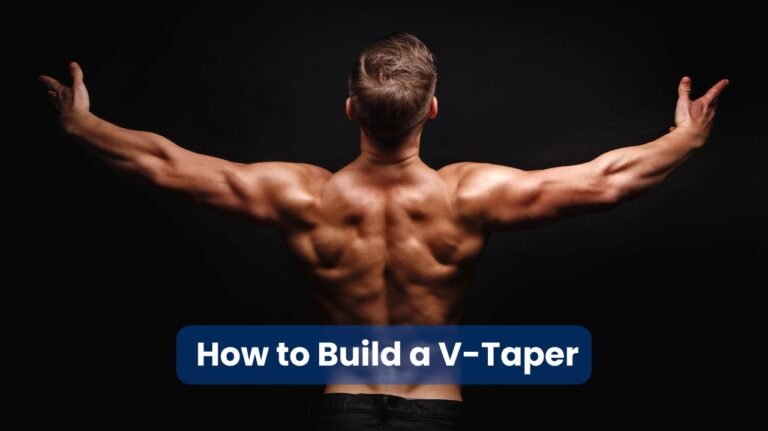How to Build a Shredded Physique: Cutting Tips for Bodybuilders
For many fitness enthusiasts and bodybuilders, achieving a shredded physique is the ultimate goal. It’s not just about building muscle mass; it’s about sculpting a lean, defined body that showcases every curve and contour of hard-earned muscle.
This process, known as “cutting,” requires dedication, discipline, and a strategic approach to diet and exercise. In this comprehensive guide, we’ll explore the essential tips and techniques for bodybuilders looking to achieve that coveted shredded look.
👉 Pack On Muscle Mass and Get Bigger and Stronger
👉 Burn Fat and Get Seriously Ripped
👉 Get Explosive Strength and Maximum Stamina
👉 Become A Gym Beast With Legal SARMs Alternatives
Understanding the Cutting Phase
Before diving into the specifics, it’s crucial to understand what the cutting phase entails. Cutting is a period in a bodybuilder’s training cycle focused on reducing body fat while maintaining muscle mass. This phase typically follows a bulking period, where the primary goal was to build muscle.
The Science Behind Cutting
Cutting revolves around creating a calorie deficit – consuming fewer calories than the body burns. This forces the body to tap into its fat stores for energy, resulting in fat loss. However, the challenge lies in preserving muscle mass during this process, as the body may also break down muscle for energy if not properly managed.
Nutrition: The Foundation of a Successful Cut
Nutrition plays a pivotal role in achieving a shredded physique. It’s often said that abs are made in the kitchen, and this holds true for the entire cutting process.
Calculating Caloric Needs
The first step in a successful cut is determining the right calorie intake. This varies based on factors such as:
- Current weight
- Activity level
- Basal Metabolic Rate (BMR)
- Body composition goals
A general rule of thumb is to start with a modest calorie deficit of 300-500 calories below maintenance level. This allows for steady fat loss while minimizing muscle loss.
Macronutrient Breakdown
While calorie control is crucial, the distribution of macronutrients (proteins, carbohydrates, and fats) is equally important. Here’s a typical macronutrient breakdown for cutting:
| Macronutrient | Percentage of Total Calories | Grams per Pound of Body Weight |
|---|---|---|
| Protein | 30-35% | 1.0-1.2g |
| Carbohydrates | 40-45% | 1.5-2.0g |
| Fats | 20-25% | 0.3-0.4g |
Protein: The Muscle Preserver
Maintaining a high protein intake is crucial during a cut. Protein helps preserve muscle mass, increases satiety, and has a higher thermic effect compared to carbs and fats. Good protein sources include:
- Lean meats (chicken breast, turkey, lean beef)
- Fish (salmon, tuna, tilapia)
- Egg whites
- Low-fat dairy products
- Plant-based options (tofu, legumes, quinoa)
Carbohydrates: Fueling Performance
While carbs are often reduced during a cut, they remain essential for maintaining training intensity and muscle fullness. Focus on complex carbs such as:
- Sweet potatoes
- Brown rice
- Oats
- Quinoa
- Whole grain bread
Healthy Fats: Hormonal Balance
Fats play a crucial role in hormone production, including testosterone, which is vital for muscle preservation. Include sources of healthy fats like:
- Avocados
- Nuts and seeds
- Olive oil
- Fatty fish
Meal Timing and Frequency
While total calorie intake is most important, meal timing can optimize performance and recovery. Some strategies include:
- Eating 4-6 smaller meals throughout the day to maintain steady energy levels
- Consuming protein before and after workouts
- Having a majority of carbohydrates around training sessions
Training: Preserving Muscle While Cutting Fat
Proper training is essential to maintain muscle mass and strength during a cut. The goal is to signal to the body that muscle is still needed, even in a calorie deficit.
Resistance Training
Maintain a high-intensity resistance training program, focusing on compound exercises that engage multiple muscle groups. This approach helps preserve muscle mass and burn more calories. Key exercises include:
- Squats
- Deadlifts
- Bench presses
- Pull-ups
- Rows
Training Frequency and Volume
During a cut, it’s often beneficial to:
- Maintain or slightly increase training frequency (4-5 sessions per week)
- Reduce overall volume (total sets and reps) to account for reduced recovery capacity
- Keep intensity (weight used) high to maintain strength and muscle
Progressive Overload
Continue to challenge the muscles by progressively increasing weight or reps when possible. This signals to the body that muscle is still needed, even in a calorie deficit.
Cardio: Finding the Right Balance
Cardiovascular exercise can accelerate fat loss, but too much can lead to muscle breakdown. Here are some guidelines:
- Start with 2-3 sessions of 20-30 minutes per week
- Focus on high-intensity interval training (HIIT) for maximum fat burning with minimal muscle loss
- Gradually increase duration or frequency as needed, but monitor closely for signs of overtraining
Supplementation: Enhancing the Cutting Process
While not essential, certain supplements can support a successful cut:
- Whey Protein: Helps meet protein needs and supports muscle preservation
- Creatine: Maintains strength and muscle fullness during calorie restriction
- Branched-Chain Amino Acids (BCAAs): May help prevent muscle breakdown, especially during fasted training
- Caffeine: Can boost metabolism and enhance workout performance
- Fish Oil: Supports overall health and may aid in fat loss
Tracking Progress and Making Adjustments
Monitoring progress is crucial during a cut to ensure you’re moving towards your goals and to make necessary adjustments.
Tracking Methods
- Weekly weigh-ins: Aim for a loss of 0.5-1% of body weight per week
- Body measurements: Use a tape measure to track changes in various body parts
- Progress photos: Take weekly photos in the same lighting and poses
- Body fat percentage: Use calipers or bioelectrical impedance scales for estimates
Making Adjustments
If progress stalls, consider:
- Further reducing calorie intake by 100-200 calories
- Increasing cardio duration or frequency
- Implementing refeed days to boost metabolism
Common Challenges and How to Overcome Them
Cutting can present several challenges. Here are some common issues and solutions:
Hunger and Cravings
- Increase fiber and protein intake for better satiety
- Drink plenty of water
- Use sugar-free gum or low-calorie flavored beverages
Energy Levels and Mood
- Ensure adequate sleep (7-9 hours per night)
- Manage stress through meditation or yoga
- Consider cycling carbohydrates to have higher carb days periodically
Plateaus
- Implement diet breaks every 4-6 weeks
- Try carb cycling or calorie cycling
- Reassess and adjust calorie intake and macronutrient ratios
The Importance of Recovery and Rest
Recovery is often overlooked but is crucial for maintaining muscle mass and overall health during a cut.
- Prioritize sleep for hormone balance and recovery
- Consider incorporating active recovery days with light activities like walking or swimming
- Use foam rolling and stretching to aid in muscle recovery
The Final Push: Peak Week Strategies
As the end of the cutting phase approaches, many bodybuilders implement peak week strategies to enhance definition and vascularity. This may include:
- Manipulating water and sodium intake
- Carb loading to fill out muscles
- Reducing water retention through specific supplement protocols
It’s important to note that these strategies should only be used by experienced bodybuilders under professional guidance, as they can be potentially dangerous if not done correctly.
👉 Boost in Focus and Energy to Help Increase Pumps and Performance
👉 Increase Gains, Promote Muscle Growth and Boost Energy
👉 Powerful Muscle Growth, Increased Blood Flow, and Enhanced Pumps
👉 Bulk-Up, Increase Gains, And Improve Recovery
Conclusion: Patience and Consistency are Key
Achieving a shredded physique is a challenging but rewarding process. It requires a delicate balance of nutrition, training, and recovery, all underpinned by patience and consistency. Remember that everyone’s journey is unique, and what works for one person may not work for another. Be prepared to experiment, track your progress, and make adjustments as needed.
By following these guidelines and staying committed to the process, bodybuilders can successfully navigate their cutting phase and reveal the sculpted physique they’ve worked so hard to build. The key is to approach the process with a long-term mindset, focusing on sustainable practices that promote both physical and mental well-being. With dedication and the right approach, that shredded, head-turning physique is within reach.







